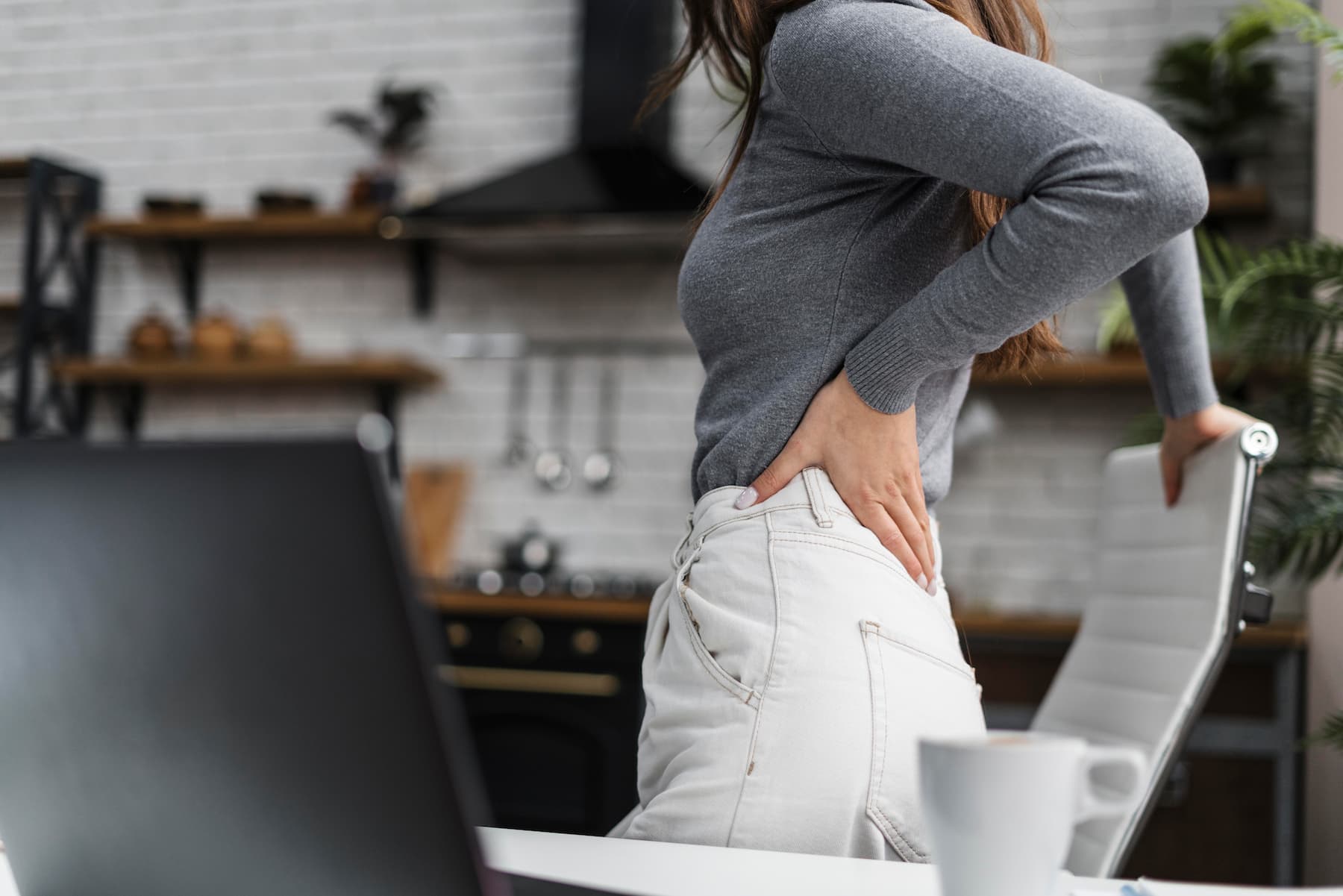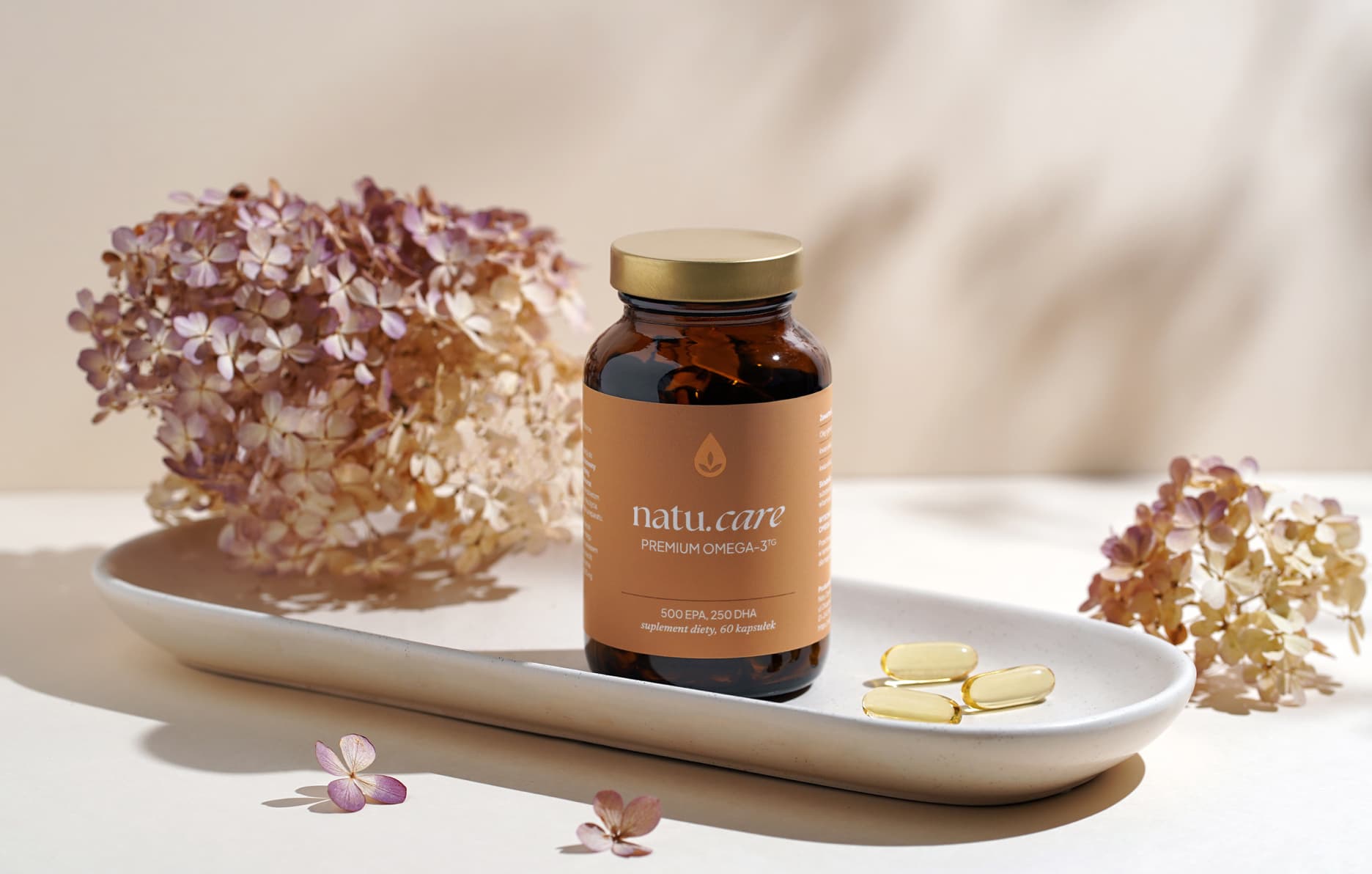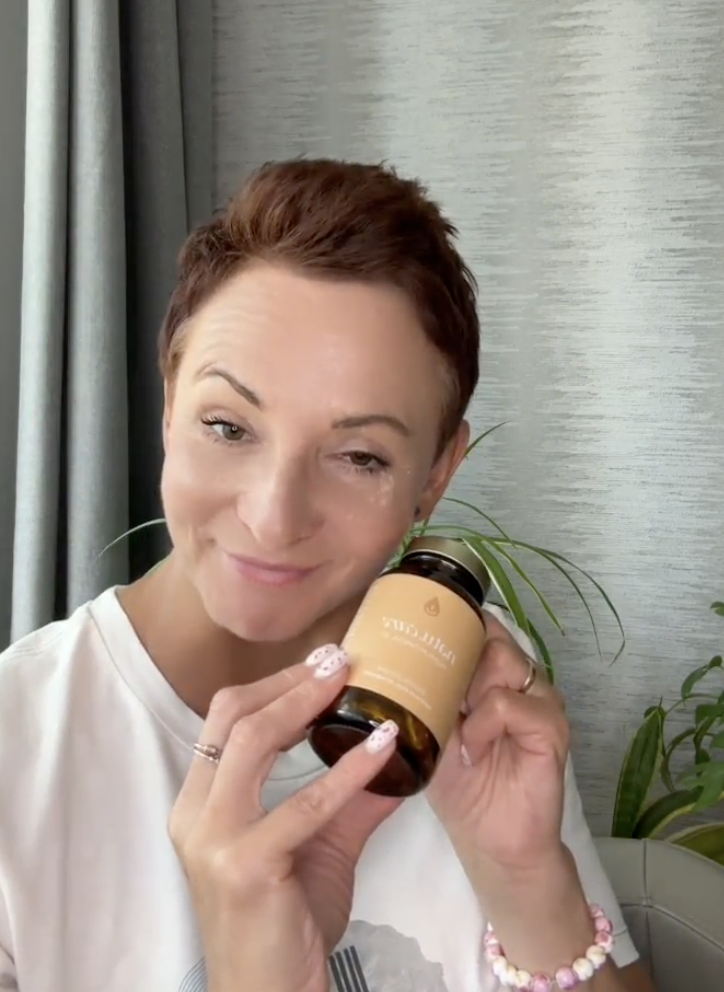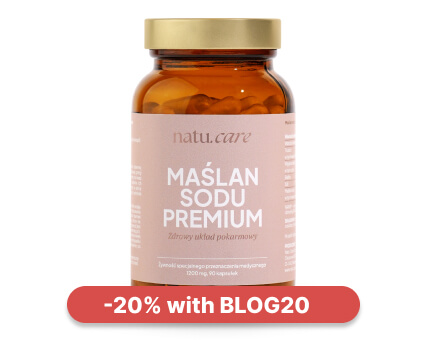Hip pain: symptoms, causes, what drugs will work?
See why hip joints hurt and how to treat their ailments.


Learn more about our editorial process
.

Learn more about our editorial process
.

Learn more about our editorial process
.

Learn more about our editorial process
.
Why you can trust us
Articles on Natu.Care are written based on scientific research, data from government websites and other reliable sources. The texts are written in cooperation with doctors, nutritionists and other health and beauty experts. Articles are reviewed before publication and during significant updates.
.Learn more about our editorial process
.Information about advertisements
Content on Natu.Care may contain links to products from the sale of which we may receive a commission. When creating content, we adhere to high editorial standards and take care to be objective about the products discussed. The presence of affiliate links is not dictated by our partners, and we select the products we review ourselves completely independently.
.Learn more about our terms and Conditions
.Few people pay attention to how good it is to be able to walk, sit and bend without hindrance. And that's because we don't usually think about the condition of our hip joints. Until they start to hurt.
.
And once they start, you suddenly realise how many normal activities involve the hips. And how much you want their discomfort to subside. That's why, below, we'll look at the most common causes of hip pain and possible treatments.
The most common causes of hip pain are the following.
From this article you will learn:
- What symptoms in addition to pain should heighten your vigilance.
- What are the most common symptoms?
- What diseases and injuries can cause hip pain. .
- How hip ailments can be treated. .
- What exercises to do to strengthen this joint. .

Sprawdź, jak może on zadbać o zdrowie Twoich stawów i urodę! Kolagen Premium (10 000 mg) wiśnia -15% z kodem BLOG15
Natu.Care Kolagen Premium 10000 mg, wiśnia
Natu.Care Kolagen Premium dla zdrowia stawów, skóry, paznokci i włosów. Wołowy kolagen w optymalnej dawce 10 000 mg. Przebadany przez niezależne laboratorium.
Sprawdź cenę
Ten kolagen dobrze się rozpuszcza, super smakuje – jak taki soczek wiśniowy. Moje włosy przestały wypadać, są gęstsze i zdrowsze a cera promienna.@Dominika P.
See also:
.
- Joint pain
- Knee pain
- Gonarthrosis
- Knee popping
- Tennis elbow
- Golfer's elbow
- Rheumatoid arthritis (RA) .
- Home remedies for knee pain
- Grandma's ways for joints
Symptoms associated with hip pain
.
Pain in the hip area may accompany you when walking, standing up or bending down. If you experience pain in your groin that radiates down your leg, this may indicate hip diseaseand.
Consider whether the pain is accompanied by:
.
- reduced mobility in the joint,
- stiffness of the joint, .
- difficulty in lifting the leg, .
- .
Another important symptom is knee pain in the other leg. E.g. when there is a problem with the right hip, the left knee hurts. This is caused by the fact that when there is a problem with the hip, the patient changes their gait to one that puts more strain on the left knee to cope with the pain on the right side..
 .
.
Kacper Nihalani doctor
- .
It is important that you monitor whether the pain persists or increases with movement or rest. Check if you see a change in the range of motion of the painful hip joint compared to the other.
When does it hurt the most?
- .
With hip pain, it is best to see an orthopaedic surgeon. The doctor will be able to most accurately diagnose its cause and implement effective treatment. Before visiting the clinic, it is a good idea to think about the specifics of your pain - this will help the specialist make a diagnosis.
To make the orthopaedist's task easier, answer the following questions:
- How long have I been experiencing pain?
- Have I recently suffered any injury or fall? .
- If so, are there problems using the limb with full weight bearing? .
- Whether the pain accompanies me during the day or intensifies at night? .
- Where exactly does my hip hurt?
- Does the pain radiate? .
- Does the pain increase with walking or other activities? .
- Do I have other symptoms in addition to the pain, such as problems moving my leg? .
- .
Causes of hip pain
- .
The causes of hip pain can be attributed to a variety of factors. The most common of these include injuries - in younger people and degenerative changes - in olderand.
Hip joint injuries
- .
The hip joint is susceptible to many injuries, with a variety of causes and consequences. Some of the most common of these include strains, sprains, contusion injuries and fracturesand.
Ligament injuries account for a significant proportion of these, particularly in athletes training outdoors. And in terms of fractures, one of the most common hip fractures is a transtibial fracture of the femur or femoral neckand.
often these fractures are the result of progressive osteoporosis, making older women particularly vulnerable. It is dangerous and can even be life-threatening as it results in high blood lossand.
It is possible to lose almost 2 litres of blood from a broken femur, and the average person has 5 litres of blood in their body..
 .
.
Kacper Nihalani doctor
- .
Elderly people after this type of fracture are often unable to stand on their feet and become recumbent patients. This, in turn, leads to overexertion of the cardiovascular system - without the help of the leg muscles, the heart is unable to pump blood efficiently throughout the body. And this is precisely what is the most common fatal complication of transtibial fracturesand.
Other common causes of death include pulmonary embolism caused by free fat groupings escaping from the fractured bone and pneumonia. Patients with hip fractures are often elderly and are more likely to become ill, and there is an abundance of bacteria that will readily settle in the lungs..
 .
.
Kacper Nihalani doctor
- .
Hip arthritis
- .
Osteoarthritis of the hip (coxarthrosis) can lead to significant pain and impairment of hip function, often requiring hip replacement surgeryand.
- .
Additionally, defects such as hip dysplasia have been identified as significant contributors to coxarthrosis, highlighting the multifactorial nature of hip disorders .
Natu.Care Collagen Premium 5000 mg, mango & passion fruit

- Collagen content: 5000 mg marine collagen hydrolysate
- Additional active ingredients: vitamin C, low molecular weight hyaluronic acid (and L-theanine and coenzyme Q10 in cocoa flavoured collagen or vitamin A and vitamin E in mango–passion fruit flavoured collagen)
- Form: powder sachets
- Dose: 1 sachet per day
- Sufficient for: 30 days
Product description
Fish collagen from the Natu.Care brand in a dose of 5000 mg, based on certified ingredients of the best quality. Regular supplementation will positively influence the appearance of the skinóry, hairów and nails – they will be rebuilt and strengthened from the inside.
In addition to collagen, which is valuable for health and beauty, it also offers other active ingredients that help to maintain a youthful complexion, shiny hair and strong nails.
The formula contains a sufficient portion of the active ingredient to positively affect joints, the musculoskeletal system and immunity.
Natu.Care Premium Collagen is available in two flavours – Cacao Bloom and Rise&Shine. Both formulas are based on the following active ingredients: marine collagen hydrolysate, wild roseóbud extract and hyaluronic acid.
Additionally, Cacao Bloom contains natural L-theanine, coenzyme Q10 and defatted Dutch cacao. Rise&Shine instead contains vitamin E and vitamin A.
These are the best collagens in the world.
These best fish collagens on the market also rós taste – Cacao Bloom is a treat for chocolate lovers. Rise&Shine will appeal to those whoólike the refreshing taste of mangoófruit and passion fruit.
Pros and cons
Pros:
- Vitamin C supports the body's collagen production, enhancing its effectiveness.
- An effective dose of hyaluronic acid, which additionally supports skin hydration and joint health.
- Fish collagen absorbs 50% better. Additionally, the manufacturer specifies the fish species it is sourced from (Atlantic cod).
- The composition has been tested by the independent and accredited J.S. Hamilton laboratory.
- MSC (Marine Stewardship Council) quality certification, which confirms that the collagen source supports sustainable fishing practices.
Cons:
- None.
Additional information
Natu.Care's fish collagen receives praise for its delicious taste. You won't find the fishy aftertaste that often comes through in other collagens. Plus, you have two tasty flavors to choose from: cocoa and mango-passionfruit.
Active ingredients like coenzyme Q10, hyaluronic acid, and natural L-theanine provide anti-inflammatory and antioxidant benefits while slowing down aging processes.
User review
Super, after about 6 weeks of use, the skin on my face became noticeably firmer. Wonderful taste.
Ania ZalewskaNatu.Care customer
Natu.Care Premium collagen 10 000 mg, mango-maracuja

- Collagen content: 10,000 mg marine collagen hydrolysate
- Additional active ingredients: vitamin C, low molecular weight hyaluronic acid (and L-theanine and coenzyme Q10 in cocoa flavoured collagen or vitamin A and vitamin E in mango–passion fruit flavoured collagen)
- Form: powder sachets
- Dose: 1 sachet per day
- Sufficient for: 30 days
Product description
One of the strongest collagens on the market, whichós provides as much as 10,000 mg in a daily serving. This allows the formula to effectively support the condition of the skin, hair and nails.
With this supplement, you will support your beauty, which will allow you to visually stop the ageing process and feel a second youth!
Natu.Care Collagen Premium 10 000 mg comes in two flavours – cherry and mango-maracuja. Both formulas have the same product backbone – collagen, hyaluronic acid and vitamin C.
In the cherry version you additionally find glucosamine, chondroitin and Indian frankincense resin extract. Mango-maracuja, on the other hand, contains vitamin E and vitamin A.
Pros and cons
Pros:
- Tested collagen formula – SeaGarden, whose effects have been confirmed in clinical studies.
- Effective dose of hyaluronic acid, additionally moisturizing the skin and positively impacting joint health.
- Vitamin C supports the body’s natural collagen production.
- The composition has been tested by the independent and accredited J.S. Hamilton laboratory.
- The product has an MSC (Marine Stewardship Council) quality certification – the collagen source supports sustainable fishing practices.
Cons:
- None.
Additional information
Users praise Natu.Care Collagen Premium for the easy dissolvability of the powder.
User review
I noticed a significant improvement in my skin texture after a few weeks of taking collagen regularly. My complexion is now as soft as velvet!
Natu.Care Collagen Premium 10000 mg, cherry

- Collagen content: 10,000 mg of hydrolyzed bovine collagen
- Additional active ingredients: vitamin C, low molecular weight hyaluronic acid, glucosamine, chondroitin, extract of Indian frankincense resin (boswellia serrata)
- Form: powder sachets for drinking
- Serving: 1 sachet per day
- Lasts for: 30 days
Product description
One of the strongest collagens on the market, providing as much as 10,000 mg per daily serving. This product can effectively support the condition of joints, skin, hair, and nails.
With this supplement, you will support your skeletal and joint system as well as your beauty, helping you visually halt the aging process and feel rejuvenated!
Pros and cons
Pros:
- The daily portion of collagen is very large – as much as 10,000 mg.
- Proven collagen formula – COLLinstant, whose effectiveness has been confirmed in clinical studies.
- Effective dose of hyaluronic acid, which additionally moisturizes the skin and positively affects joint health.
- Vitamin C supports the body's natural collagen production.
- Glucosamine is a fundamental building block of compounds found in joint cartilage and a component of collagen that gives elasticity to connective tissue in tendons.
- Chondroitin is a natural component found in the human body, mainly in cartilage. This large molecule (mucopolysaccharide) has the ability to absorb water, which helps maintain the elasticity and resilience of cartilage.
- Frankincense resin extract supports blood circulation and joint mobility and reduces their stiffness. It may help alleviate inflammatory conditions.
- The composition has been tested by the independent and accredited J.S. Hamilton laboratory.
Cons:
- None.
Additional information
Users praise Natu.Care Collagen Premium for the easy dissolving of the powder.
Premium Sodium Butyrate
Product description
Premium Sodium Butyrate is a natural support for your digestive system. With a high dose of butyric acid (940 mg), it supports the regeneration of the intestinal mucosa, improving gut health and function, and aids in the absorption of nutrients. By taking care of your intestines, you're taking care of the health of your entire body.
Studies involving people suffering from irritable bowel syndrome confirm that sodium butyrate is ideal for supporting issues related to bacterial flora imbalances (for example, after antibiotic therapy), constipation and diarrhea, inflammation of the intestinal mucosa, or a diet low in fiber.
Premium Sodium Butyrate capsules are made using the innovative DRcaps® technology. This guarantees that the active ingredients in the product are protected from the destructive effects of stomach acids and digestive enzymes. As a result, we can be sure that the beneficial ingredients are released in the small intestine and are fully absorbed by our body.
Premium Sodium Butyrate from Natu Care is 100% tested, and its composition contains only the highest quality raw materials.
Pros and cons
Pros:
- Supports digestive system function
- Helpful for various gastrointestinal conditions, including IBS
- High dose of butyric acid in each capsule
- Eco-friendly, clean, and tested composition
- Free from added sugar, gluten, GMOs, and lactose
- Innovative capsule technology - DRcaps
Cons:
- None
Additional Information
Take 3 capsules daily at any time of the day, preferably with a meal. Swallow the capsules whole with water.
Premium Sodium Butyrate is intended for adults.
The product should be used under medical supervision.
User review
I've been using the product for 2 weeks. My stomach feels lighter, and my digestion has improved. I recommend it.
Natu.Care Premium Magnesium + Vitamin B6

- Magnesium content per day: 305 mg
- Additional active ingredients: Vitamin B6 (2.1 mg)
- Form: capsules
- Serving size: 3 capsules per day
- Sufficient for: 30 days
Product description
The Premium Magnesium + Vitamin B6 dietary supplement is a comprehensive product that combines three organic forms of magnesium (citrate, malate, and diglycinate) and vitamin B6 in highly absorbable forms.
Magnesium is an essential mineral without which our bodies cannot function properly. It supports the immune, nervous, and muscular systems, maintains electrolyte balance, and is involved in cell division and the regulation of mental functions.
Research shows that magnesium supplementation is even more effective when accompanied by vitamin B6, which is included in our product. Vitamin B6 is responsible for the proper functioning of the nervous and immune systems, as well as the proper functioning of the heart.
If you want to safely get rid of feelings of fatigue, concentration problems, hair loss, muscle cramps, trembling, or irritability, reach for Premium Magnesium from Natu.Care, tested by the independent, certified laboratory J.S. Hamilton Poland.
Pros and cons
Pros
- Supports the proper functioning of the nervous and immune systems.
- Reduces feelings of fatigue and tiredness.
- Maintains proper psychological functions.
- The purity of the ingredients (free from anti-caking agents, artificial fillers, and additives such as titanium dioxide, microcrystalline cellulose, talc, magnesium stearate, and silicon dioxide) has been confirmed by laboratory tests.
- High absorption of ingredients.
- Soft capsules that are easy to swallow.
- Suitable for vegetarians and vegans.
Cons
- None.
Additional information
Take with a meal, 3 capsules per day.
The capsules should be taken with at least 250 ml of water.
If you have trouble sleeping, it is advisable to take 1 capsule in the morning and 2 capsules in the evening, no later than 4 hours before bedtime.
Avoid combining with products high in calcium (milk, yogurt, cheese), as this may negatively affect magnesium absorption.
Pregnant and breastfeeding women should consult a doctor before starting supplementation.
User review
I’m very impressed with the speed of delivery. The product itself is of high quality and absorbs well. After two weeks of supplementation, I’ve noticed a significant improvement in muscle recovery, especially during periods of intense training. I highly recommend it!
Product description
The dietary supplement contains omega-3ᵀᴳ, or omega-3 acids in the form of trójglyceridesów. Scientific studies suggest that this form of fatty acidsós up to 2 times better absorbed than the estersós present in many dietary supplements on the market. This means that you are assured of their effectiveness and of supplying yourself with valuable omega acids.
Fatty acids omega-3 are derived from wild anchovy oil. It is a rich source of healthy fats that are essential for the health of the cardiovascular, immune and nervous systems, as well as the proper function of vision, joints muscles.
Scientific research suggests that wild anchovies are a good source of healthy fats.
Scientific research also suggests that an adequate intake of omega-3 fatty acidsós protects against and supports the treatment of depression and anxiety disorders. In addition, omega-3s influence the hydration and appearance of the skinóry and support healthy sleep.
.
The formula contains a total of 750 mg of EPA+DHA acidsós, which is three times higher than the recommended minimum of 250 mg for the Polish population. Omega-3 TG Premium has studies indicating that its TOTOX is 9, which is a very good result.
Supplementation of omega-3 fatty acidsóis recommended for anyone who does not eat 1–2 portions (approximately 300 g) of oily fish per week. Children during growth, seniors, physically active people, vegans and vegetarians, as well as patients undergoing cardiovascular treatment and prevention of heart disease also have an increased need.
Pros and cons
The dietary supplement contains omega-3ᵀᴳ, or omega-3 acids in the form of trójglyceridesów. Scientific studies suggest that this form of fatty acidsós up to 2 times better absorbed than the estersós present in many dietary supplements on the market. This means that you are assured of their effectiveness and of supplying yourself with valuable omega acids.
Fatty acids omega-3 are derived from wild anchovy oil. It is a rich source of healthy fats that are essential for the health of the cardiovascular, immune and nervous systems, as well as the proper function of vision, joints muscles.
Scientific research suggests that wild anchovies are a good source of healthy fats.
Scientific research also suggests that an adequate intake of omega-3 fatty acidsós protects against and supports the treatment of depression and anxiety disorders. In addition, omega-3s influence the hydration and appearance of the skinóry and support healthy sleep.
.
The formula contains a total of 750 mg of EPA+DHA acidsós, which is three times higher than the recommended minimum of 250 mg for the Polish population. Omega-3 TG Premium has studies indicating that its TOTOX is 9, which is a very good result.
Supplementation of omega-3 fatty acidsóis recommended for anyone who does not eat 1–2 portions (approximately 300 g) of oily fish per week. Children during growth, seniors, physically active people, vegans and vegetarians, as well as patients undergoing cardiovascular treatment and prevention of heart disease also have an increased need.
Additional information
The dietary supplement contains omega-3ᵀᴳ, or omega-3 acids in the form of trójglyceridesów. Scientific studies suggest that this form of fatty acidsós up to 2 times better absorbed than the estersós present in many dietary supplements on the market. This means that you are assured of their effectiveness and of supplying yourself with valuable omega acids.
Fatty acids omega-3 are derived from wild anchovy oil. It is a rich source of healthy fats that are essential for the health of the cardiovascular, immune and nervous systems, as well as the proper function of vision, joints muscles.
Scientific research suggests that wild anchovies are a good source of healthy fats.
Scientific research also suggests that an adequate intake of omega-3 fatty acidsós protects against and supports the treatment of depression and anxiety disorders. In addition, omega-3s influence the hydration and appearance of the skinóry and support healthy sleep.
.
The formula contains a total of 750 mg of EPA+DHA acidsós, which is three times higher than the recommended minimum of 250 mg for the Polish population. Omega-3 TG Premium has studies indicating that its TOTOX is 9, which is a very good result.
Supplementation of omega-3 fatty acidsóis recommended for anyone who does not eat 1–2 portions (approximately 300 g) of oily fish per week. Children during growth, seniors, physically active people, vegans and vegetarians, as well as patients undergoing cardiovascular treatment and prevention of heart disease also have an increased need.
Expert opinion
The dietary supplement contains omega-3ᵀᴳ, or omega-3 acids in the form of trójglyceridesów. Scientific studies suggest that this form of fatty acidsós up to 2 times better absorbed than the estersós present in many dietary supplements on the market. This means that you are assured of their effectiveness and of supplying yourself with valuable omega acids.
Fatty acids omega-3 are derived from wild anchovy oil. It is a rich source of healthy fats that are essential for the health of the cardiovascular, immune and nervous systems, as well as the proper function of vision, joints muscles.
Scientific research suggests that wild anchovies are a good source of healthy fats.
Scientific research also suggests that an adequate intake of omega-3 fatty acidsós protects against and supports the treatment of depression and anxiety disorders. In addition, omega-3s influence the hydration and appearance of the skinóry and support healthy sleep.
.
The formula contains a total of 750 mg of EPA+DHA acidsós, which is three times higher than the recommended minimum of 250 mg for the Polish population. Omega-3 TG Premium has studies indicating that its TOTOX is 9, which is a very good result.
Supplementation of omega-3 fatty acidsóis recommended for anyone who does not eat 1–2 portions (approximately 300 g) of oily fish per week. Children during growth, seniors, physically active people, vegans and vegetarians, as well as patients undergoing cardiovascular treatment and prevention of heart disease also have an increased need.
Natu.Care Vitamin D 2000 UI
Product description
Vitamin D plays a crucial role in our health and well-being. It affects calcium and phosphate metabolism, which translates to healthy bones and teeth. It also helps regulate the immune system, and studies indicate its influence on the functioning of the nervous system.
Vitamin D, although called a “vitamin,” is actually a prohormone that our body produces on its own, primarily under the influence of sunlight. Unfortunately, our modern lifestyle contributes to deficiencies of this essential vitamin. Working in enclosed office buildings, using (necessary!) SPF creams, and covering the body with clothing all make it very difficult, if not impossible, to obtain adequate levels of vitamin D from sunlight. This is why appropriate, year-round supplementation is so crucial.
Vitamin D from Natu.Care is a well-tested vitamin D3 suspended in safflower oil, a plant known for its numerous health benefits. The convenient, easy-to-swallow capsule will make supplementation a part of your daily, healthy routine, improving your overall well-being.
Pros and cons
Pros:
- Ensures proper functioning of the immune system
- Supports the maintenance of healthy bones and teeth
- Maintains proper heart, kidney, and muscle function
- Tested by an independent, certified laboratory
- Convenient and easy-to-swallow capsule
- Clean composition - free from added sugar, gluten, GMOs, lactose, and without preservatives or colorants
Cons:
- None.
Additional Information
Pregnant women and breastfeeding mothers should consult a doctor before using the product. This dietary supplement is intended for a healthy adult population up to the age of 75.
Collagen Booster - Glow Stories

- Active ingredients: bamboo shoot extract, Quatrefolic®, L-Methionine, L-cysteine, vitamin E, vitamin A, niacin (vitamin B3), vitamin B6, vitamin B2 (riboflavin), biotin, zinc, copper
- .
- Form: capsules
- .
- Dose: 1 capsule per day
- .
- Sufficient for: 60 days
- .
Product description
A dietary supplement containing vitamins, minerals and plant extracts thatósupport the skinóhand, hair and nails. The product is especially distinguished by the form of folate – it is Quatrefolic, whichós absorbed very well and is natural.
In addition to valuable vitamins and minerals, such as vitamin A, E, B3, B2 and biotin, the formula contains bamboo shoot extract, whichóry further enhances your beauty.
Pros and cons
A dietary supplement containing vitamins, minerals and plant extracts thatósupport the skinóhand, hair and nails. The product is especially distinguished by the form of folate – it is Quatrefolic, whichós absorbed very well and is natural.
In addition to valuable vitamins and minerals, such as vitamin A, E, B3, B2 and biotin, the formula contains bamboo shoot extract, whichóry further enhances your beauty.
Additional information
A dietary supplement containing vitamins, minerals and plant extracts thatósupport the skinóhand, hair and nails. The product is especially distinguished by the form of folate – it is Quatrefolic, whichós absorbed very well and is natural.
In addition to valuable vitamins and minerals, such as vitamin A, E, B3, B2 and biotin, the formula contains bamboo shoot extract, whichóry further enhances your beauty.
Treatment of hip pain
- .
Methods of treatment for hip pain will depend on the cause. If your hip hurts as a result of strain, you will probably only need rest and - possibly - ointments, as well as oral medicines with analgesic and anti-inflammatory effectsand. Remember, however, not to take these on your own, but to consult your doctor in this regard.
If there is damage to the structures of the hip joint, physiotherapy or even surgery may also be necessary. In extreme cases, where the pain is very severe and the function of the joint severely limited, due to joint destruction, it is possible to replace the hip with a hip replacementand.
Exercises for hip pain
- .
What exercises to do for hip pain will depend on the cause of the pain. Avoid prolonged sitting and ensure correct posture. Stretching the hip muscles, such as forward bends, will help to improve flexibility and reduce discomfort.
For arthritis, do regular exercises to strengthen the muscles around the hip joint, such as lifting the straight leg in lateral recumbency. Avoid exercises that put stress on the joint, such as squats, especially with weights. Aerobic exercise, such as swimming or cycling, can also improve your range of motion and will support your fitness in the process.
But it is best if a physiotherapist fits you with the right set of exercises. The specialist will also be able to select other treatments for you that may be helpful in controlling pain and improving mobility of the hip joint.
The best thing to do is to have a physiotherapist fit you with the right set of exercises.

Sprawdź, za co pokochały go tysiące klientek Natu.Care Premium Omega-3ᵀᴳ -15% z kodem BLOG15
Natu.Care Omega-3ᵀᴳ Premium
Natu.Care Omega-3ᵀᴳ Premium dla zdrowia serca, mózgu i odporności. Najlepsza przyswajalność. Optymalna dawka 750 mg. Przebadana przez niezależne laboratorium.
Zobacz więcej
Produkt ma super skład, transparentną etykietę i co dla mnie jest ważne – małe kapsułki do połknięcia. Nie ma też nieprzyjemnego efektu odbijania rybą, który miałam spożywając inne produkty. Widzę znaczną poprawę odporności. Polecam!@Kasia P.
See also:
Summary
- .
- Pain in the hip joint can occur with movement as well as at rest.
- Pain in the hip joint can occur with movement as well as at rest.
- Associated symptoms, which should always alert you, are stiffness in the joint and limited mobility of the limb.
- Associated symptoms, which should always alert you, are stiffness in the joint and limited mobility of the limb.
- Hip pain can result from either osteoarthritis or trauma. .
- Medicine has a whole range of methods to treat hip pain - from pharmacotherapy to physiotherapy to surgery. .
- To improve the condition of your hips, you can do simple exercises geared towards strengthening the muscles around the joints. .
FAQ
.How does the hip hurt?
.Hip pain can take many forms. Some patients experience a stabbing pain, others a burning or pulling sensation, still others complain of a sensation similar to a sudden current passing through the joint and leg. Whichever type of pain you are experiencing, it is always a good idea to seek help from an orthopaedic surgeon.
Which antibiotic for hip arthritis?
.Hip arthritis is most often not caused by bacteria and the use of an antibiotic is not warranted. However, if the inflammation happens to be bacterial, then an antibiotic is usually selected on the basis of a culture. In such cases, Dalacin is usually used as a first-line antibiotic.
.Remember never to take antibiotics on your own - they should always be prescribed by your doctor.
How long does inflammation of the hip joint last?
.Inflammation of the hip joint can last from a few days to several weeks. In some cases, the condition can become recurrent, leading to chronic inflammation. It is important to monitor the symptoms, follow the recommended treatment, and take care of the joint. Acute infection may be short-lived, but chronic inflammation may persist for months. Early treatment reduces the risk of complications and improves quality of life.
Which doctor to go to with hip pain?
.For pain and other problems with the hip joint, it is best to go to an orthopaedic surgeon. This doctor treats both injuries and diseases of the joints. If the cause of your hip pain is sciatica, you may be referred to a neurologist, and if you are found to be suffering from a rheumatic disease, to a rheumatologist.
Can hip pain be from the spine?
.Yes, hips can hurt from the spine. With poor posture, overload is created in the spine, which affects how your whole body aligns. This can result in hip pain. Problems with the lumbar spine usually lead to these complaints.
Do diseased joints like the heat?
.It depends. If the pain is caused by inflammation (e.g. due to an injury), cold compresses are recommended. Warming up in such a case can cause the ailment to worsen. Heat is good for pains caused by overstretched muscles - it helps to relax them. Warming up is most commonly used for back pain.
.What causes the most damage to the hip joints?
.The hip joints in particular do not like prolonged sitting. They can also be harmed by overloading. This can happen if you decide to exercise very intensively, e.g. with heavy loads, without adequate preparation. Physical activity is a guarantee of health for your joints - not only your hip joints - but it should be adapted to your current condition and capabilities.
- .
Resources
.See all
.Netter's Atlas of Orthopaedic Anatomy. (n.d.). PZWL Medical Bookshop. Retrieved December 7, 2023, from https://pzwl.pl/Atlas-anatomii-ortopedycznej-Nettera,5041703,p.html
Campbell Orthopaedic Surgery Volume 1, S. Terry Canale, James H. Beaty. (n.d.). MediPage Medical Publishing. Retrieved December 7, 2023, from https://medipage.pl/pl/p/Campbell-Ortopedia-Operacyjna-TOM-1%2C-S.-Terry-Canale%2C-James-H.-Beaty/2774
Surgical treatment in osteoarthritis. Schnettler, Steinau. (n.d.). MediPage Medical Publishing. Retrieved December 7, 2023, from https://medipage.pl/pl/p/Leczenie-chirurgiczne-w-zapaleniach-kosci-i-stawow.-Schnettler%2C-Steinau/1991
Orthopaedics and Traumatology Volume 1-2. (n.d.). PZWL Medical Bookshop. Retrieved December 7, 2023, from https://pzwl.pl/Ortopedia-i-traumatologia-Tom-1-2,4964653,p.html
Book for doctors specialising in orthopaedics and traumatology of the musculoskeletal system-Andrzej Nowakowski,Łukasz Matuszewski,Marek Synder,Tomasz Mazurek. (n.d.). Retrieved December 7, 2023, from https://www.medicon.pl/podrecznik-dla-doctors-specialising-in-orthopaedics-and-traumatology-motor-access/32341?gad_source=1&gclid=CjwKCAiA98WrBhAYEiwA2WvhOi5tRhqM4RWQnJul5WXDlcJg99iCzfC-CW45kTG0oRxccPpaK3YveRoCqxoQAvD_BwE
Traumatology of the musculoskeletal system. (n.d.). PZWL Medical Bookshop. Retrieved December 7, 2023, from https://pzwl.pl/Traumatologia-ukladu-ruchu,4985755,p.html
- .
Editorials
Meet the team



Chondroitin helps the joints and other elements of the body.

Glutathione is one of the most potent antioxidants for supporting the body's health. Find out how it works and where to get it from.
![Glucosamine for knee, hip and other joints [reviews].](https://cdn-resources.natu.care/uploads/1/glukozamina_hero_7554bc6363.jpg)
Find out how glucosamine works for your joints and what ailments it can help you with.



